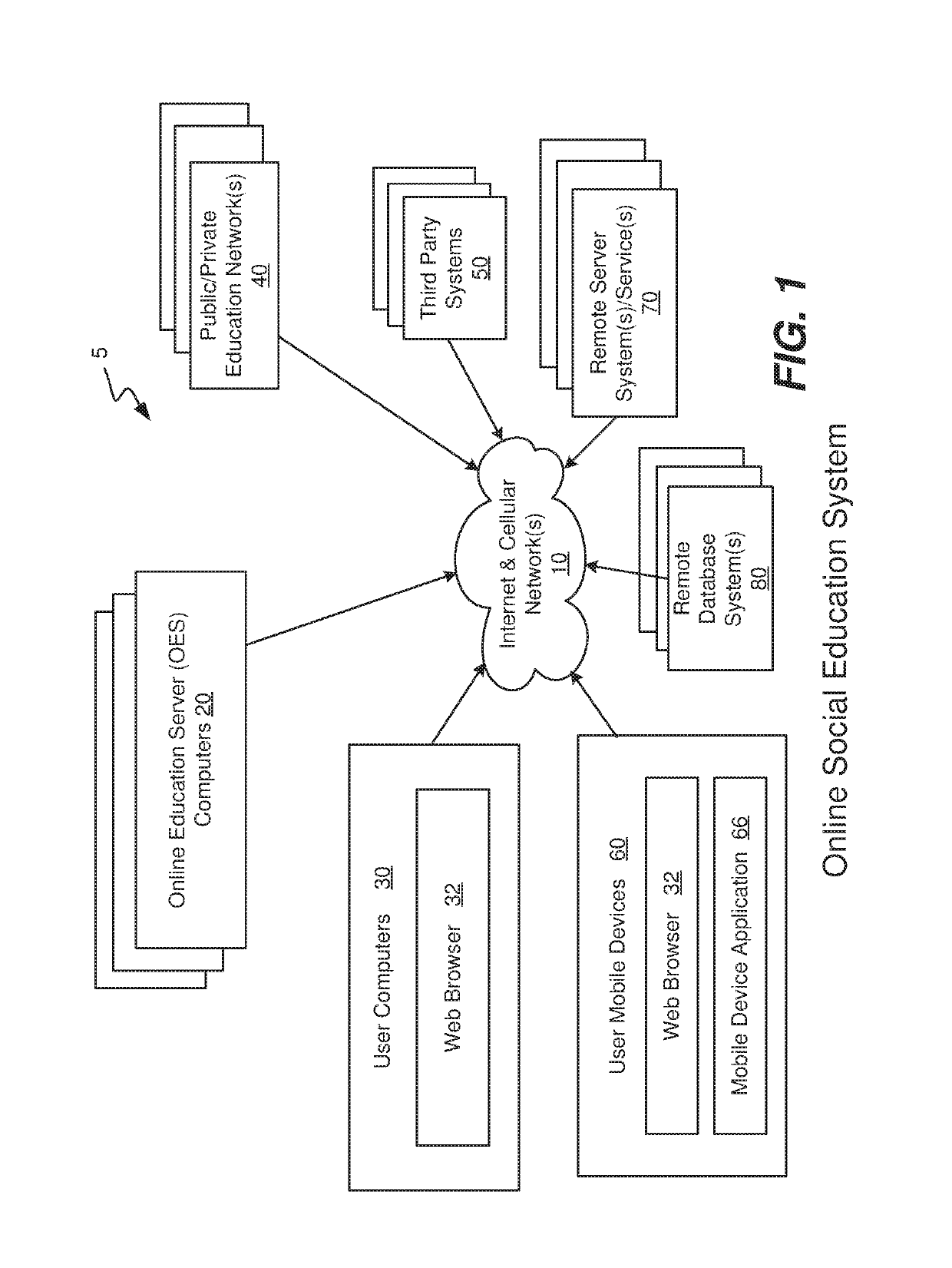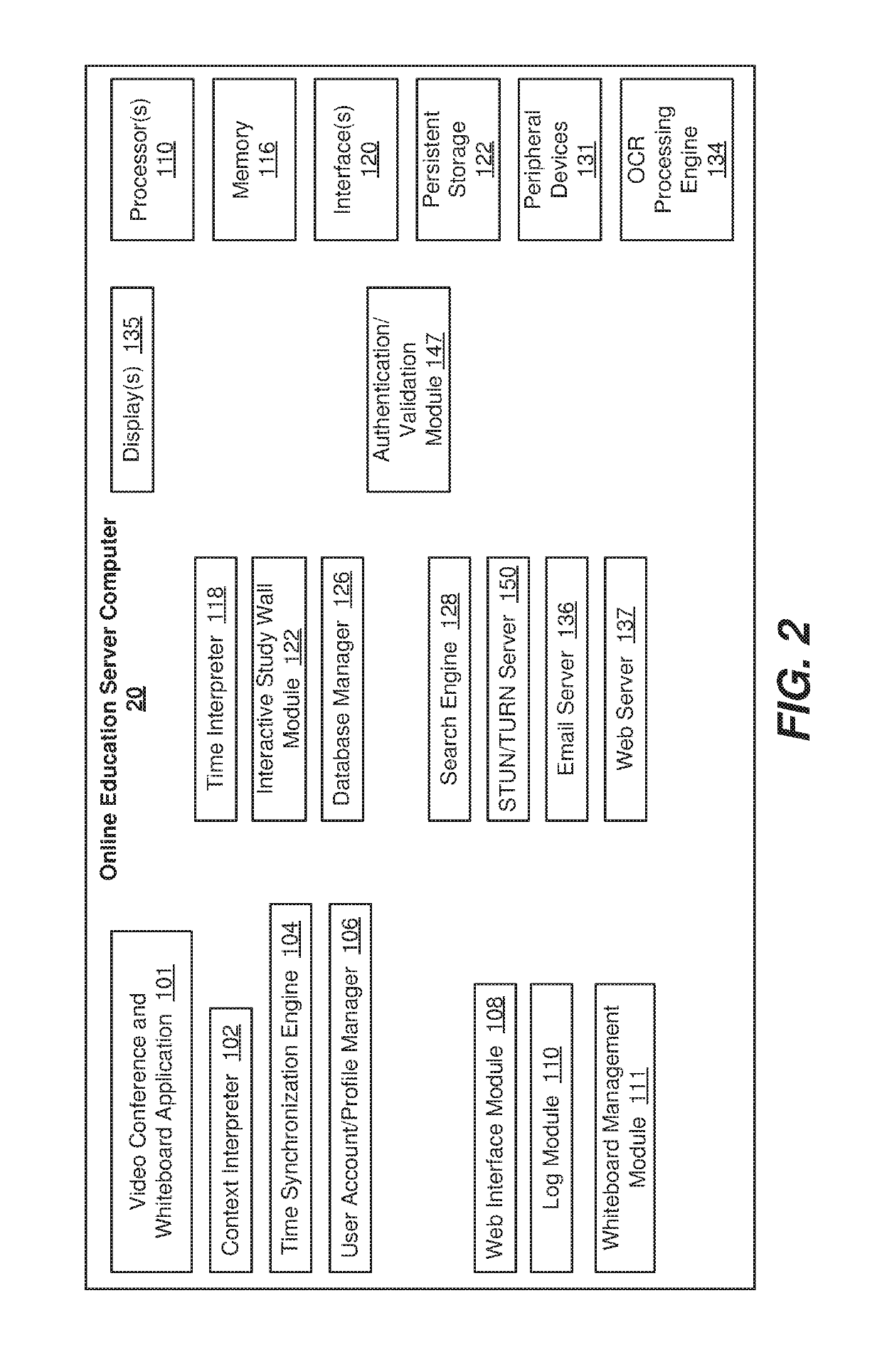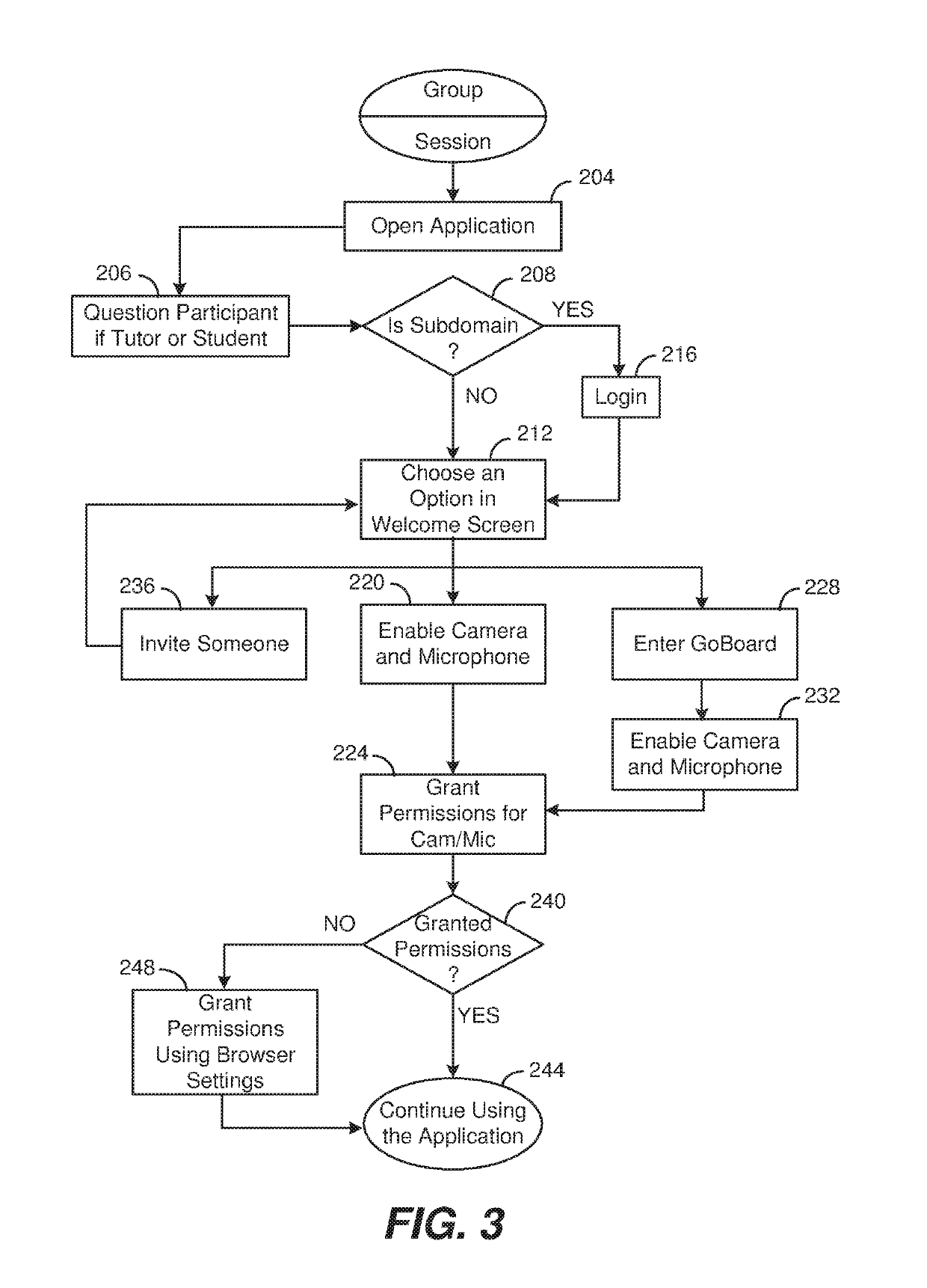Bandwidth reduction in video conference group sessions
a video conference and group session technology, applied in the field of video conferencing, can solve the problems of increasing the bandwidth required, affecting the communication between participants, freezing video streams, etc., and affecting the speed of video conference, so as to reduce the latency of communication between participants, reduce the amount of failures, and reduce the cost of bandwidth
- Summary
- Abstract
- Description
- Claims
- Application Information
AI Technical Summary
Benefits of technology
Problems solved by technology
Method used
Image
Examples
Embodiment Construction
[0036]As mentioned above, embodiments of the present invention allow direct streaming of video and audio between participants (such as between students and tutors) and reduces dramatically the amount of bandwidth required for each such student or tutor computer. The video and audio streams need not pass through any central server (such as server computer 20) while being streamed between participants, although such a central computer may be used for other functions such as recording streams. Any suitable peer-to-peer communication platform may be used and will typically include a server on a server computer to facilitate the communications. For example, WebRTC may be used and will include such a server. This server is used at the beginning of a video conference in order to signal to the participants who are the other participants; once signaled, the participants then communicate peer-to-peer without a need for a central server as will be described in more detail below.
Online Social E...
PUM
 Login to View More
Login to View More Abstract
Description
Claims
Application Information
 Login to View More
Login to View More - R&D
- Intellectual Property
- Life Sciences
- Materials
- Tech Scout
- Unparalleled Data Quality
- Higher Quality Content
- 60% Fewer Hallucinations
Browse by: Latest US Patents, China's latest patents, Technical Efficacy Thesaurus, Application Domain, Technology Topic, Popular Technical Reports.
© 2025 PatSnap. All rights reserved.Legal|Privacy policy|Modern Slavery Act Transparency Statement|Sitemap|About US| Contact US: help@patsnap.com



